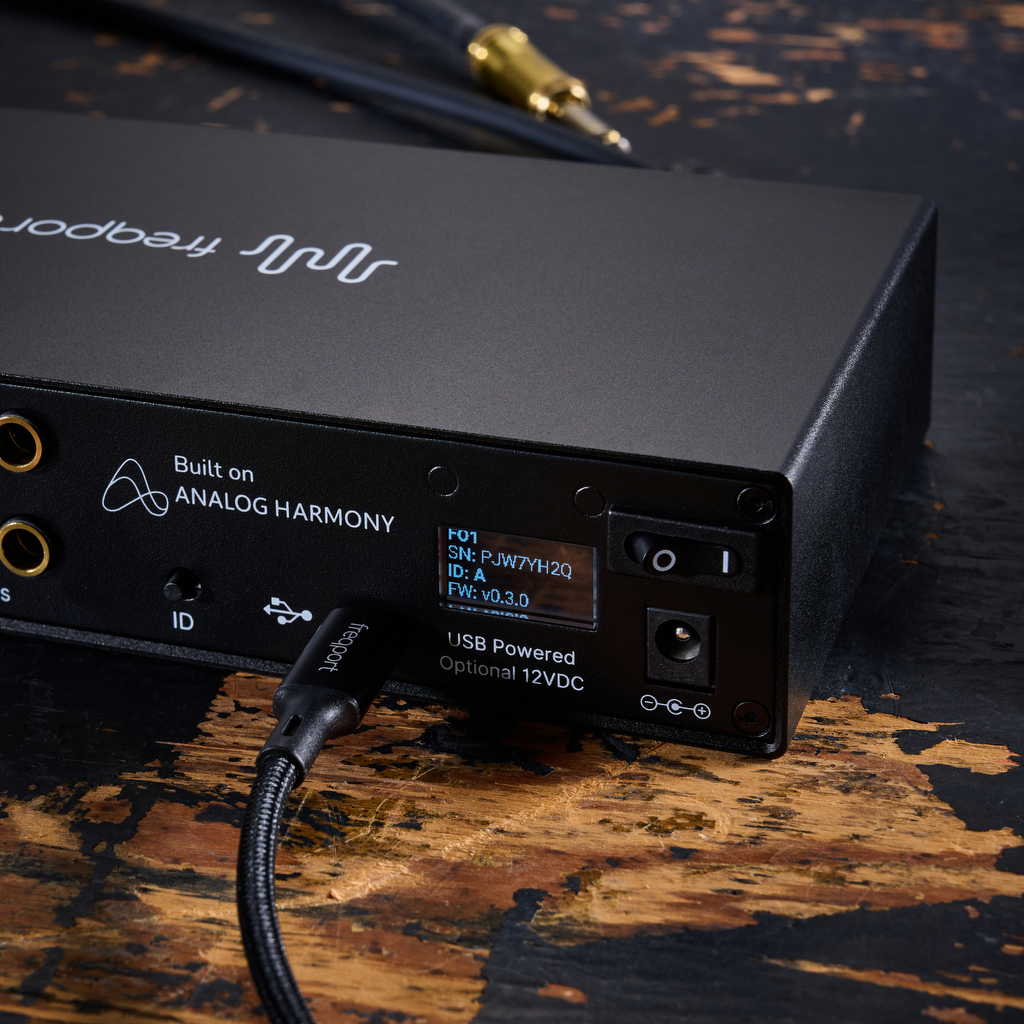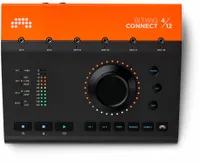MusicRadar Verdict
FreqInOut opens up your virtual DAW-based production universe to your external hardware with flawless latency-free I/O. Its ability to personalise the plugin shell to correspond to the gear in play is a nice touch.
Pros
- +
Latency-free audio routing of external hardware directly into your DAW: No fuss. No stress.
- +
Ability to create bespoke skins for gear-specific input/output settings is fantastic.
- +
Build quality of the unit is robust and reliable.
Cons
- -
General interface a little dull.
- -
It would be nice to have a few more signal modulation options from the get-go.
MusicRadar's got your back
What is it?
If you’re anything like as space-conscious as we are, you might have gradually started thinning down your hardware gear collection in favour of plugin alternatives. Yet while many of today’s plugin options provide exacting emulations of classic and current hardware seamlessly within our DAWs, for some the joy of hardware goes beyond sound.
It’s that indescribable, in-sync feeling of being hands-on with a tactile hardware instrument, effect, drum machine or gizmo that remains an enduring reason why some keep their home studios stocked out with physical kit.
Beyond the actual space demands that keeping hold of such a hardware arsenal brings, actually interfacing your hardware, especially the older stuff, with your 21st-century DAW projects can sometimes be a gruelling ordeal that can nip your moment of inspiration in the bud.
Freqport might have a solid solution. The 2019-founded Danish and Australian makers of the exceptionally cool Freqtube FT1 continue their ambition to heal the hardware/software divide with FreqInOut FO1.
This new USB-C interface routes either mono or stereo signals from your hardware into your computer and out again, enabling access to your hardware from within a bespoke, no-nonsense plugin shell.

Performance
Firstly, let’s talk about the hardware (the FreqInOut FO1 itself that is). The sturdy but sleek black unit features eight simply-labelled ports, four 6.3mm jack line inputs and four corresponding line outputs, as well as a USB-C connection to your computer. This simplicity of I/O is refreshing and plain to see, yet it obfuscates the pretty advanced under-the-hood mechanics.
Inside the box, multiple analogue processing circuits can take in more than one external hardware device and further process the incoming audio into a digital, DAW-ready format. It achieves this by leaning on internal ESS 32-bit convertors which can convert up to 192Khz.
Want all the hottest music and gear news, reviews, deals, features and more, direct to your inbox? Sign up here.
Once the audio is routed, the Freqport software hub enables you to attenuate the gain, and further shape the signal via stereo field tweaking using M/S Processing, blending wet and dry signals via parallel processing.
Coolest of all though, for this visually-motivated writer, is the ability to create custom plugin skins for your specific hardware chains.
Upon attaching the unit, a brisk download of the corresponding software via Freqport’s website takes a matter of minutes.
The FreqInOut plugin shell can be opened either as a standalone audio track or as an input effect.
While the plugin’s rather flat appearance is a little tricky to navigate initially, hovering your cursor over the surrounding grey/white buttons handily reveals their intent.
Being so simple in terms of I/O, working with external instruments and effects is a quick matter of jacking the output of said device into one of FreqInOut’s four inputs, selecting it via the plugin window, activating it and arming the track to monitor the input. There was no latency detected whatsoever.
The setup differs for sound-generating instruments such as synths, where lowering the output is required. This wasn’t immediately clear to us, but after a few minutes of faffing, it was simple to figure out and we got a nice clean, latency-free signal from a dusty old synth we’ve not mined for years.
But perhaps the greatest joy – the ‘build your own plugin’ aspect – is achieved via using a nifty on-the-fly generated QR code. Scanning this allows you to upload an image of your hardware and use it as a preset ‘skin’ for its saved settings within the plugin.
It’s also useful for locking an image of your perfect knob-settings for instant recall in case your devices (like many of ours) end up being kicked around in boxes for a few weeks between projects.

Verdict
So, our experience with FreqInOut did exactly as it promised – providing a seamless route in for our hardware peripherals.
The speed of use even encouraged us to dig out some particularly gnarly old stuff that hadn’t seen the light of the sun in… too long to mention… inspired by the now open door to older kit that FreqInOut provided.
In terms of negatives, there’s the slight boringness of the plugin interface – though the personalisation aspect of adding photos of your own gear is pretty damn cool. Yet navigating the surrounding settings of the UI was a little too ‘functional’. It’d be nice to have a few more options to modify and modulate the incoming signal – though to be honest, there’s plenty of scope to do that with other plugins and within your DAW itself, now you’ve got the signal in play.
We also experienced a couple of initial crashes, though after a full-DAW restart the plugin cooperated well for the duration of our test.
As indicated earlier, the immediate, latency-free ability to just wire our hardware directly into our DAW projects is – in our world at least – a bit of a revelation. Previous attempts to make our external kit play nice with our DAW have frequently been beset by problems, but FreqInOut removes all the stress, making our music-making life that bit simpler.
Hands-on demos
Freqport
Alternatives
Recently released by Bitwig, its first foray into hardware aims to achieve a similar hardware/software bridge to FreqInOut. Both allow CV/gate control and software control of hardware. However, Connect is more directly tied to Bitwig’s core DAW.
Find out more about Bitwig Connect 4/12
MOTU’s newest version of its UltraLite interface sports a vast array of I/O and its built-in DSP can be controlled by MOTU’s bespoke Cue Mix software.
Find out more about MOTU UltraLite-mk5
Specifications
Price | $677 | £511 | €597 |
Key features | 4x Jack Inputs (+18dBu levels with -10dBV/+4dBu) 4x Jack Outputs (+18dBu levels) with ANALOG MATRIX per output USB-C powered or optional DC plug Internal convertors: 120dB DNR 32bit DAC, 116dB DNR 32bit ADC Supporting up to 192kHz sample-rate Plugin control – Windows/Mac VST, VST3, AU, AAX |
Dimensions | Unit: 220mm X 105mm X 43mm (W x H x D) Boxed: 290mm x 130mm x 70mm (W x H x D) |
Contact |

I'm Andy, the Music-Making Ed here at MusicRadar. My work explores both the inner-workings of how music is made, and frequently digs into the history and development of popular music.
Previously the editor of Computer Music, my career has included editing MusicTech magazine and website and writing about music-making and listening for titles such as NME, Classic Pop, Audio Media International, Guitar.com and Uncut.
When I'm not writing about music, I'm making it. I release tracks under the name ALP.
You must confirm your public display name before commenting
Please logout and then login again, you will then be prompted to enter your display name.



